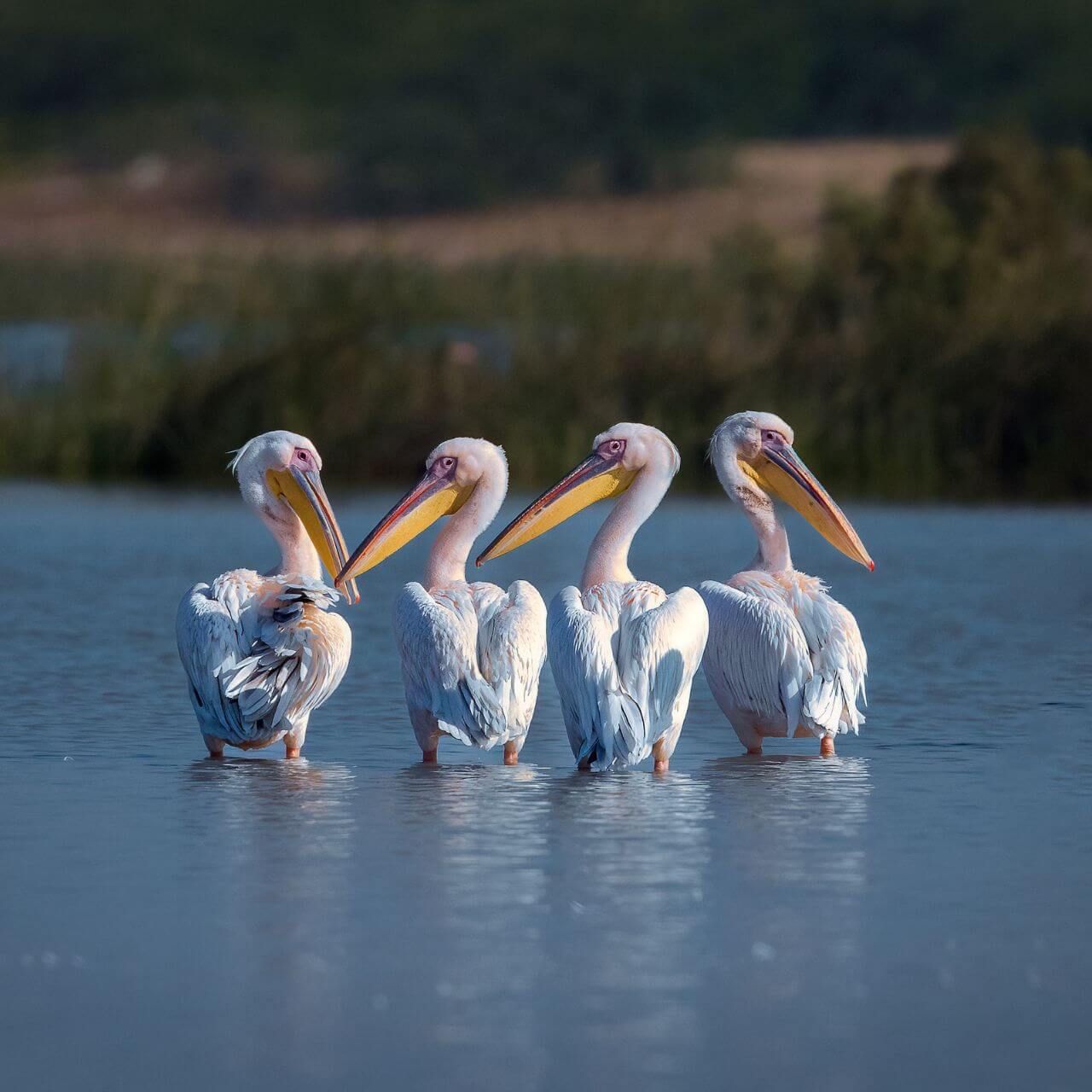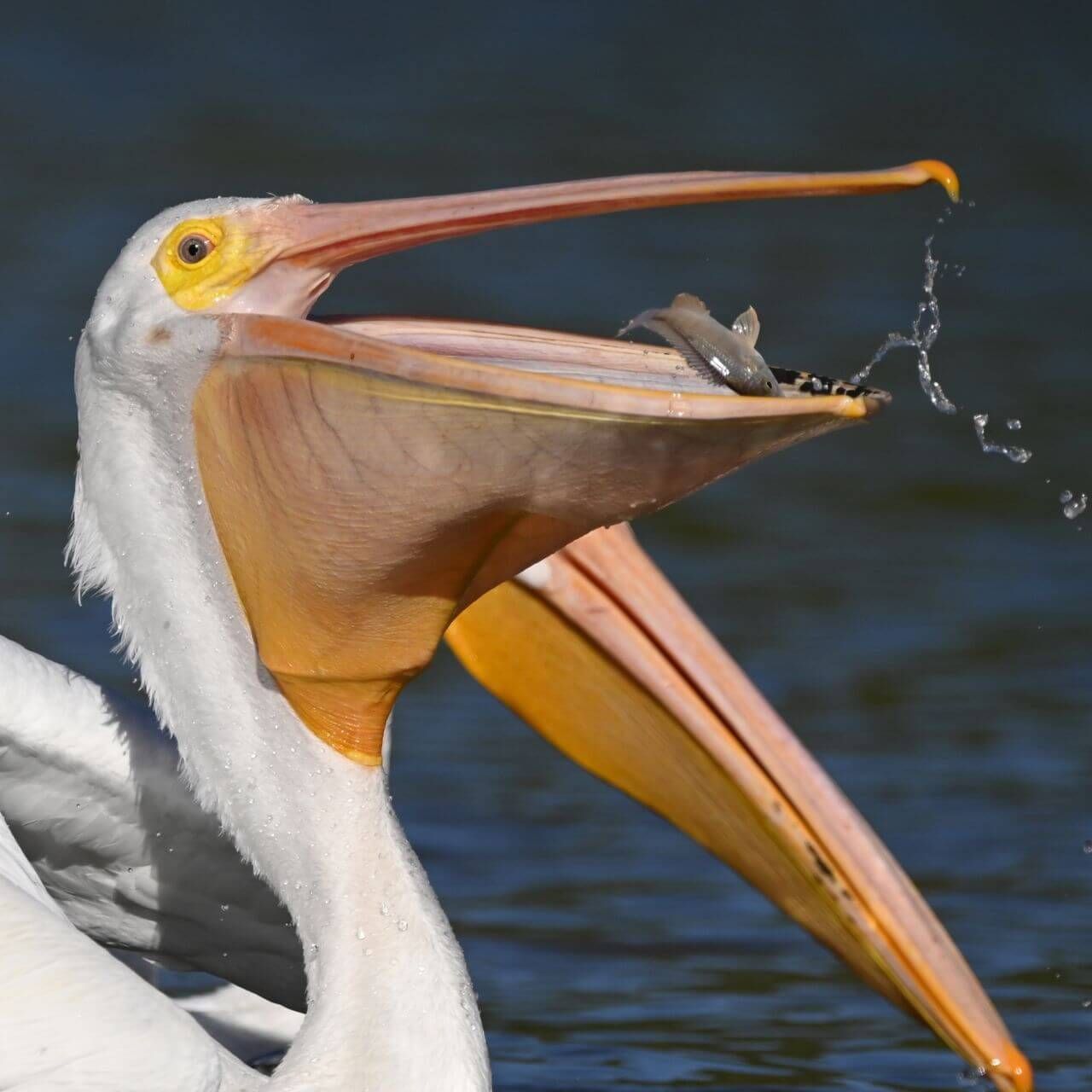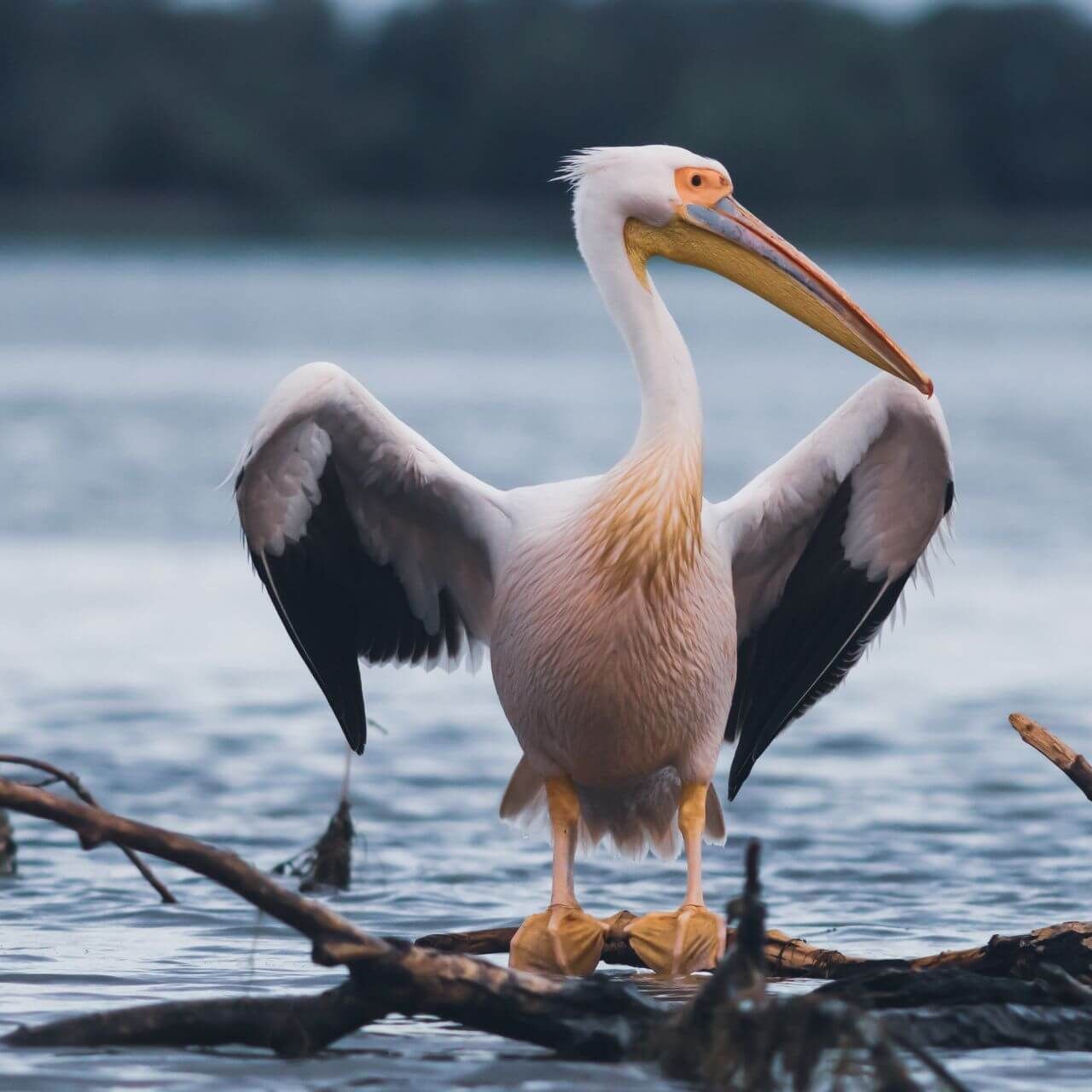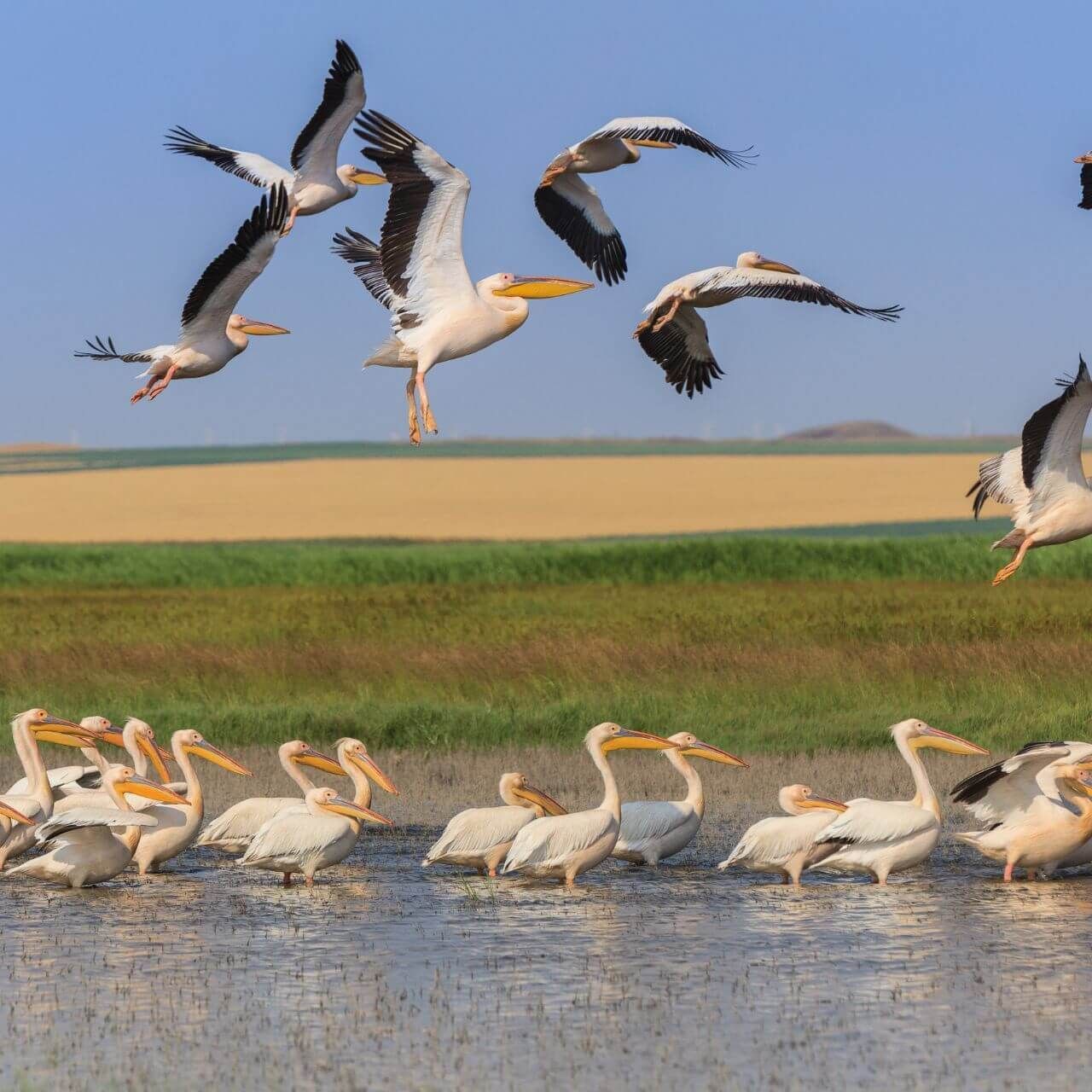Pelicans

Let's Learn About Pelicans
Word of the Week
Gular Pouch
A gular pouch is a flexible, bucket-like structure on a pelican's lower beak.
Pelicans use their gular pouch to scoop up large mouthfuls of food. It also helps them cool down on hot days.
Fast Facts

Where do pelicans live?
Pelicans live on every continent except Antarctica.
They are typically found near the ocean or other bodies of water, like lakes and rivers. They have webbed feet and waterproof feathers to help them live in and around water.
What do pelicans eat?
Pelicans are carnivores.
Most pelicans eat fish. They also eat animals like small crustaceans, amphibians, and even other birds.


What do pelicans have in common?
- Pelicans have a large beak and gular pouch.
- Pelicans are strong fliers with large wingspans.
- Pelicans have webbed feet.
- Pelicans have waterproof feathers.
- Pelicans live and nest in groups.
How many pelicans are there?
There at 8 species of pelicans.
Most pelicans are not threatened with extinction! However, they do face threats like habitat loss, overfishing of their food supply, and ocean and coastline pollution.

Species Spotlight
Brown Pelican
Pelecanus occidentalis
Brown pelicans may be the smallest pelican species, but they are still one of the largest birds in North America. Their wingspan reaches 7 feet wide, making them easy to spot as they fly along the coastlines of North America and South America.
Brown pelicans use their long beak and flexible gular pouch to scoop up fish, crustaceans, and other prey. The stretchy skin allows them to catch and swallow large amounts of food in one bite.
Unlike most pelicans, brown pelicans hunt by diving into the water from the air. They dive beak-first from as high as 60 feet. The Peruvian pelican is the only other diving species, though they dive from a much lower height. The other six pelican species hunt while floating on the water.
Brown pelicans are named for their brown feathers, though the feathers on their head are often white. During the breeding season, their head feathers turn yellow and the skin around their eyes becomes brighter. Some brown pelicans also develop a bright red beak and gular pouch.
The bright colors help brown pelicans attract a mate, one of the most important things an animal can do in its lifetime! They are monogamous, though they do not mate for life. They make their nests in protected areas on the ground. Both males and females care for the eggs and chicks for about 8 months before they eventually leave the nest and become independent.
BRAIN BLAST
Research other ocean birds to compare their hunting techniques to brown pelicans.
Conservation Corner
Pollution: Littered Fishing Gear
What do you picture when you picture ocean pollution? Do you picture…
-Plastic bottles floating around?
-Grocery bags on the beach?
-Chemicals draining in from a river?
There are many types of ocean pollution. One type of ocean pollution that often gets forgotten is loose fishing gear. Fishing gear includes items like…
-Fishing lines and hooks
-Large nets
-Traps (such as for crab fishing)
-Ropes
Fishing gear is often hard to see, causing wildlife to swallow it or become entangled. Large amounts of fishing gear have been found in the stomachs of animals like whales and sharks. Dolphins, seals, and sea turtles easily get tangled in webs of fishing nets and lines.
Sea birds, like pelicans, are also affected by fishing gear pollution. It gets stuck around their heads and necks as they dive for fish. Pelicans have also been found with fishing hooks stuck in their beaks.
Fortunately, scientists are working to reduce the threat of fishing gear pollution. Organizations like the World Wildlife Fund are working to educate fishing communities about the importance of collecting all fishing gear after use. They add trackers to fishing gear so lost gear can be found and collected. They are also working with local governments to add more laws around fishing practices.
Learn more about the World Wildlife Fund’s work and how you can make a difference below.
Please note: This webpage from the World Wildlife Fund shows photos of entangled sea animals*
Learn More!
Glossary
Adaptation
The process by which a species becomes more fit for its environment over the course of several generations. It is a result of natural selection.
Beak
The extended jaw of a bird (also known as a bill).
Bird
A group of endothermic (warm-blooded) vertebrates that have wings and feathers and also lay eggs!
Carnivore
An animal that eats other animals.
Creche
A gathering of offspring cared for by multiple adults.
Gland
An organ in many animals that produces a substance (ex. sweat glands, venom glands, preening glands).
Gular Flutter
Waggling of a bird's gular pouch to cool their body temperature.
Gular Pouch
Flexible, bucket-like structure on a pelican's lower beak.
Monogamous
An animal that has only one mate.
Nest
A structure made by birds (and other animals) used as a shelter.
Predator
An animal that hunts other animals for food.
Preen
[Of birds] cleaning and organizing feathers with its beak.
Preening Gland
A gland located on a bird back near their tail that produces oil used to clean and water-proof feathers.
Prey
An animal that is hunted and eaten by another animal.
Species
A closely related group of animals with similar characteristics that are capable of reproducing (example: tigers).
Thermoregulation
The various ways animals control their body temperatures (cool down or warm up).







